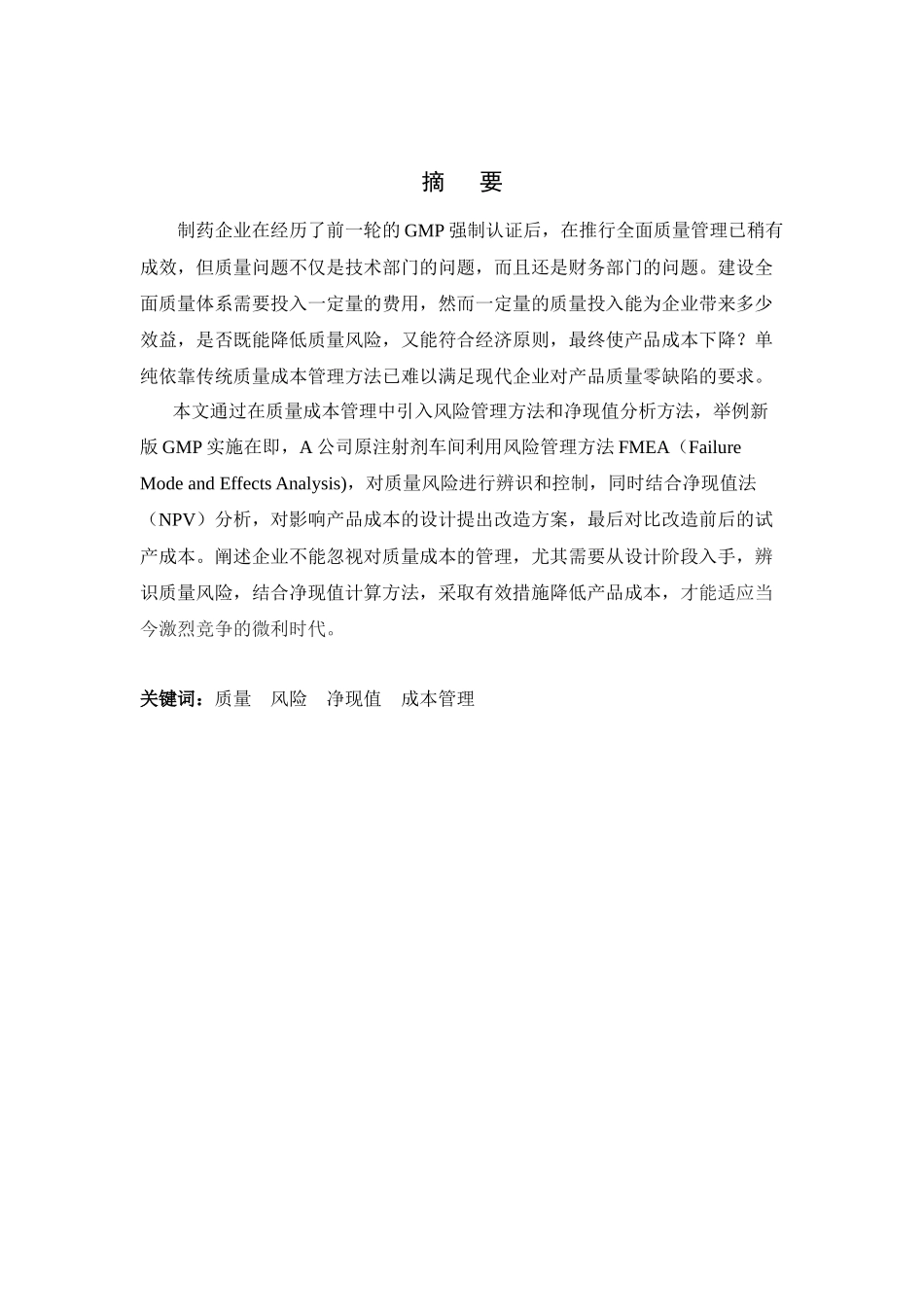摘 要 制药企业在经历了前一轮的 GMP 强制认证后,在推行全面质量管理已稍有成效,但质量问题不仅是技术部门的问题,而且还是财务部门的问题。建设全面质量体系需要投入一定量的费用,然而一定量的质量投入能为企业带来多少效益,是否既能降低质量风险,又能符合经济原则,最终使产品成本下降?单纯依靠传统质量成本管理方法已难以满足现代企业对产品质量零缺陷的要求。本文通过在质量成本管理中引入风险管理方法和净现值分析方法,举例新版 GMP 实施在即,A 公司原注射剂车间利用风险管理方法 FMEA(Failure Mode and Effects Analysis),对质量风险进行辨识和控制,同时结合净现值法(NPV)分析,对影响产品成本的设计提出改造方案,最后对比改造前后的试产成本。阐述企业不能忽视对质量成本的管理,尤其需要从设计阶段入手,辨识质量风险,结合净现值计算方法,采取有效措施降低产品成本,才能适应当今激烈竞争的微利时代。关键词:质量 风险 净现值 成本管理Application of Quality Risk Management and NPV Analysis in building the modern system of Quality Cost ManagementAbstractSince the enforcement of GMP certification in China, many pharmaceutical companies have made good progress in quality management. While improving product quality will help the manufacturers to meet compliance requirement and benefit the customers, it often requires financial investment. This has raised some questions: will the investment in quality improvement benefit the companies and the shareholders in the long run? Can the investment reduce the risk to quality without increasing the cost of manufactured goods? And last but not least, how to transform the traditional quality management approach to effectively address today’s quality and compliance challenges faced by the pharmaceutical industry? In this thesis, the concept of cost of quality ,and risk management methodologies were introduced. An example was used to illustrate how to apply FMEA (Failure Mode and Effect Analysis) to proactively id...


